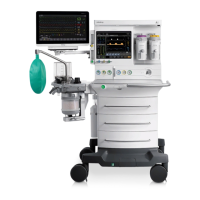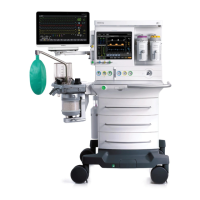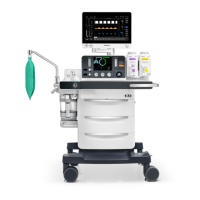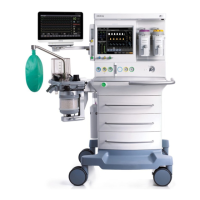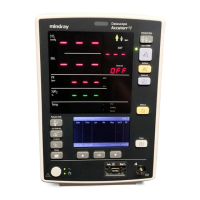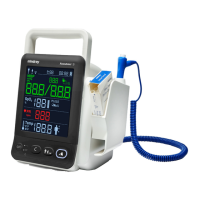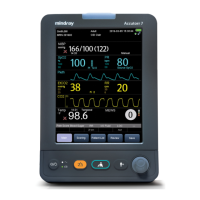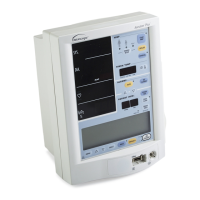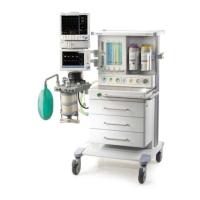Maintenance
9 - 2 Operator’s Manual of Anesthesia System
WARNING: Do not use a malfunctioning anesthesia system. Have all repairs and
service done by an authorized service representative.
WARNING: Use a cleaning and disinfection schedule that conforms to your
institution's disinfection and risk-management policies.
• Refer to the material safety data sheet as applicable.
• Refer to the operation and maintenance manuals of all
disinfection equipment.
• Do not inhale fumes produced during any disinfection process.
WARNING: Use extreme care while handling the CO2 absorbent as it is a caustic
irritant.
WARNING: Only use lubricants approved for anesthesia or O
2
equipment.
WARNING: Do not use lubricants that contain oil or grease. They can burn or
explode in the presence of high O
2
concentrations.
WARNING: Obey infection control and safety procedures. Utilized equipment may
contain blood and body fluids.
WARNING: Movable parts and removable components may present a pinch or a
crush hazard. Use care when moving or replacing system parts and
components.
CAUTION: To prevent system damage:
• Refer to the documentations provided by the manufacturer of the
cleaning agent.
• Never use organic, halogenated or petroleum-based solvents,
anesthetic agents, glass cleaning agents, acetone or other irritant
agents.
• Never use abrasive agents (i.e. steel wool or silver polish) to clean
components.
• Keep all liquids away from electronic components.
• Prevent liquid from entering the equipment.
• All cleaning solutions used must have a pH value between 7.0 and
10.5.
CAUTION: Never immerse the oxygen sensor or its connector into any type of
liquid. Dispose the O2 sensor according to the manufacturer's
specifications.
CAUTION: Do not wash the inner surface of the oxygen sensor.
CAUTION: Do not perform soaking or high-temperature processing on the
O2 sensor.
NOTE: No repair should ever be attempted by anyone not having experience
in the repair of devices of this nature. Replace damaged parts with
components manufactured or sold by Mindray. Then test the unit to
ensure that it complies with the manufacturer’s published
specifications.
NOTE: If necessary, contact Mindray for the circuit diagram, list of parts and
calibration instructions of products or other information related to
equipment maintenance.

